Centre for Functional Materials(CFM)
All Events
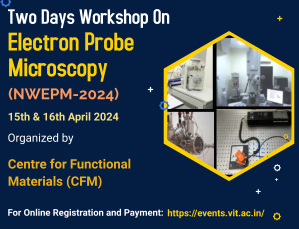
Two days Workshop on Electron Probe Microscopy (NWEPM-2024)
Two days Workshop on Electron Probe Microscopy(NWEPM-2024)
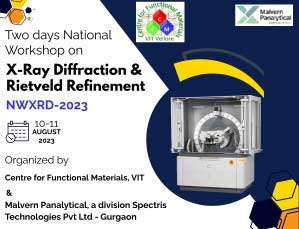
Two days National Workshop on X-Ray Diffraction & Rietveld Refinement (NWXRD-2023)
Two days National Workshop on X-Ray Diffraction & Rietveld Refinement (NWXRD-2023)
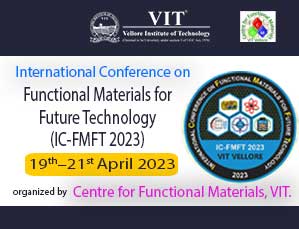
International Conference on Functional Materials for Future Technologies 2023(ICFMFT-2023)
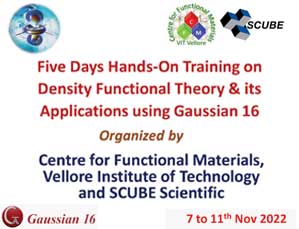
Five Days Hands On Training on Density Functional Theory and its Applications using Gaussian 16

National Workshop
Five Days Hands On Training on Density Functional Theory and its Applications using Gaussian 16
One day National Workshop on Functional Materials (NWFM-2021)
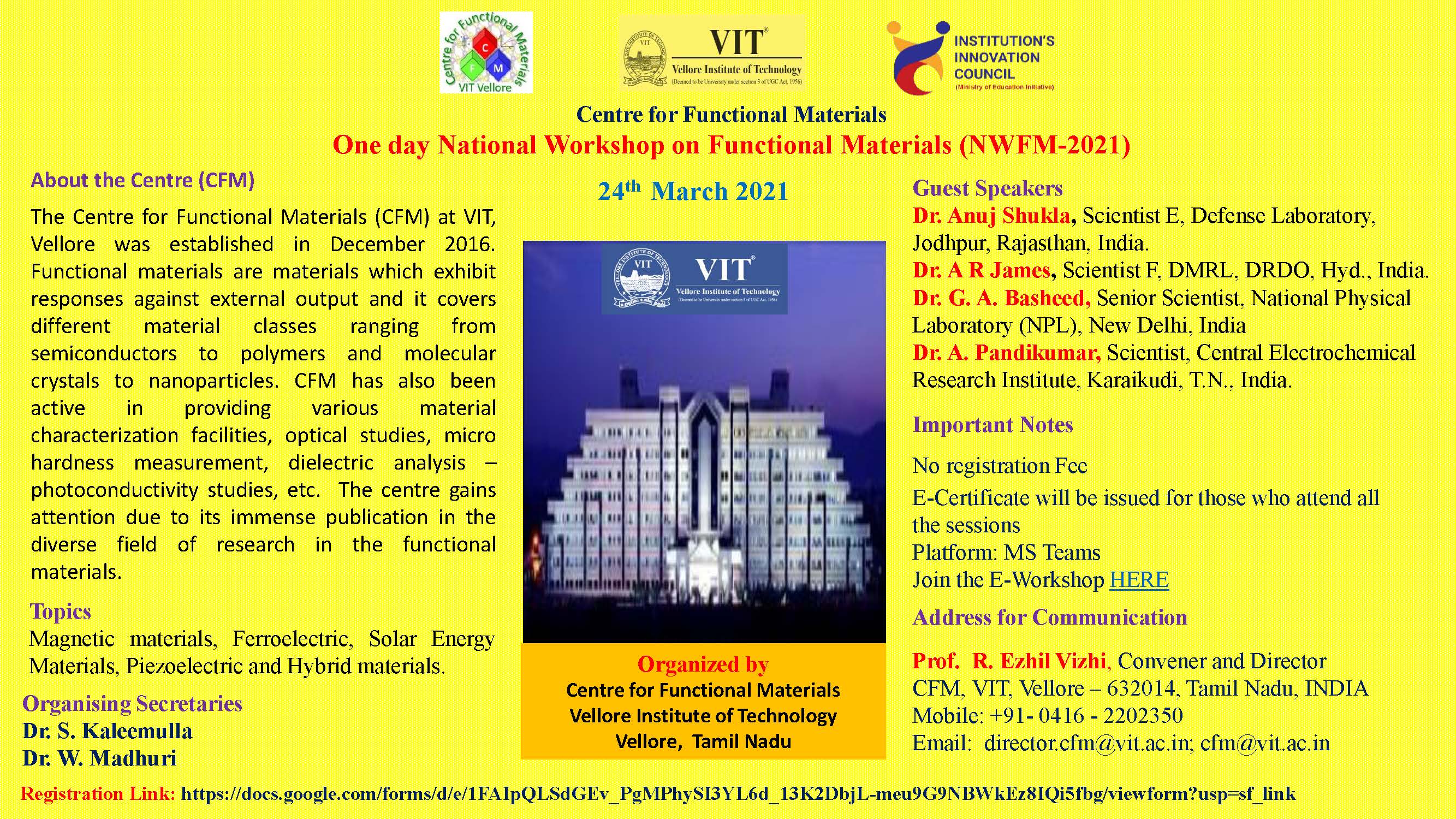
Venue
Schedule
Session 1 (10:00 AM -11:30 AM)
Title: Functional Materials for Defence Application
Dr. Anuj Shukla
Scientist E, Defense Laboratory, Jodhpur, Rajasthan, India.
Venue
Read Abstract
About the Speaker
Session 2 (11:30 AM - 01:00 PM)
Title: Research in DMRL on Nano-materials: Piezoelectrics & Ferroelectrics
Dr. A R James
Scientist F, DMRL, DRDO,Hyderabad, India
Venue
Read Abstract
About the Speaker
Session 3 (02:00 PM - 03:30 PM)
Title: Racetrack Memory Devices: Trapping and Injecting Single Domain Walls in Magnetic Wire
Dr. G. A. Basheed
Senior Scientist, National Physical Laboratory (NPL), New Dehli, India
Venue
Read Abstract
About the Speaker
Session 4 (3:30 PM - 05:00 PM )
Title: Heterojunction Functional Materials for Photoelectrocatalytic Water Splitting
Dr. A. Pandikumar
Scientist, Central Electrochemical Research Institute, Karaikudi, T.N., India.
Venue
Read Abstract
About the Speaker
Interested are requested to register through the link given below.
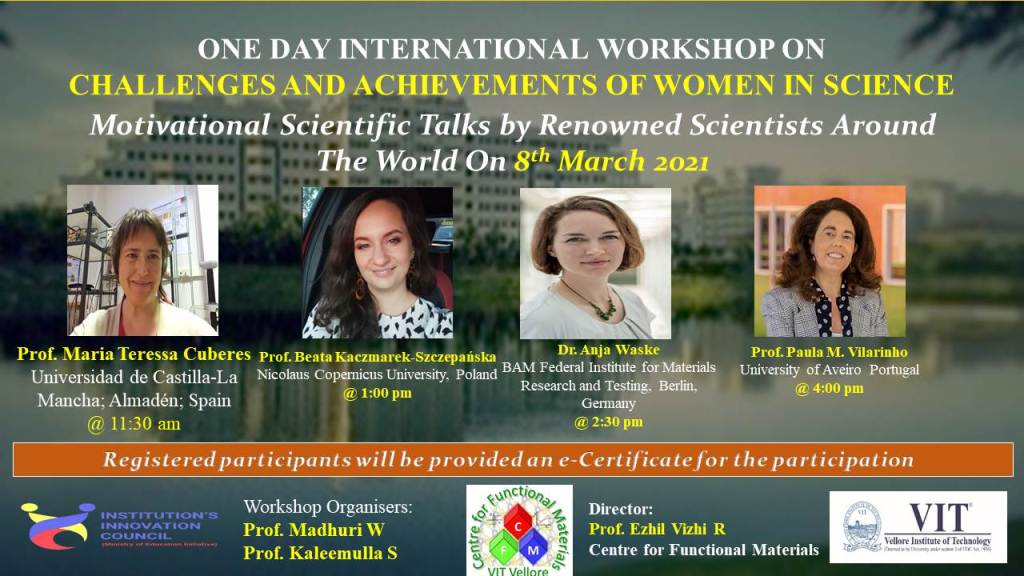
International Workshop
One Day International Workshop on Challenges and Achievements of Women in Science
Motivational Scientific Talks by Renowned Scientists Around The World On 8thMarch 2021

Session 1 (@ 11:30 am)
Title: Learning About Materials on the Nanoscale with Scanning Probe Microscopes
Prof. Maria Teressa Cuberes
Universidad de Castilla-La Mancha; Almadén; Spain
Venue
Read Abstract
About the Speaker
Session 2 (@ 1:00 pm)
Title: Nanotechnology in cosmetics - opportunities or challenges?
Prof. Beata Kaczmarek-Szczepańska
Nicolaus Copernicus University, Poland
Venue
Read Abstract
About the Speaker
Session 3 (@ 2:30 pm)
Title: X-ray Non-destructive testing of materials and composites
Dr. Anja Waske
BAM Federal Institute for Materials Research and Testing, Berlin, Germany
Venue
Read Abstract
About the Speaker
Session 4 (@ 4:00 pm)
Title: Spark Plasma Texturing: a technology development for lead free pioezoelectrics
Prof.Paula M. Vilarinho
University of AveiroPortugal
Venue
Read Abstract
About the Speaker
Interested are requested to register through the link given below.
The registered attendees will be provided an e-certificate for participation in the workshop.


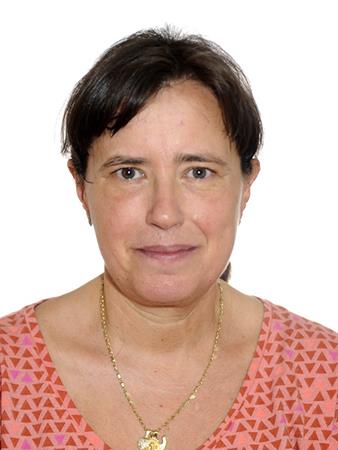 Prof. Maria Teressa Cuberes
Prof. Maria Teressa Cuberes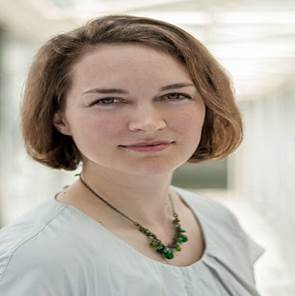 Dr.-Ing. Anja Waske
Dr.-Ing. Anja Waske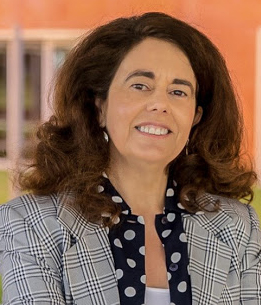 Prof.Paula M. Vilarinho
Prof.Paula M. Vilarinho